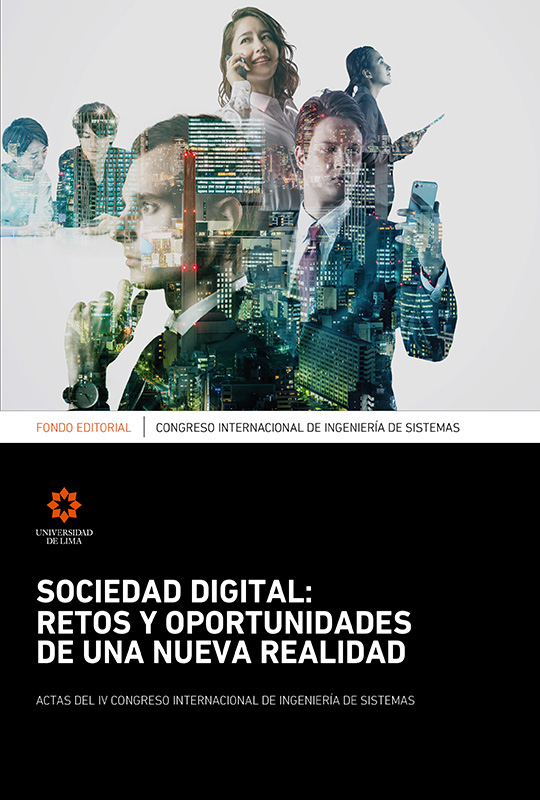Blockchain applications in IoT and computing in the fog
DOI:
https://doi.org/10.26439/ciis2021.5548Keywords:
blockchain, internet of things, smart contracts, fog computingAbstract
Since its inception in 2008, blockchain technology has attracted great interest in various fields in recent years. The initial application was in the field of cryptocurrencies, supporting Bitcoin. This fact in itself was a revolution in economics since technology made it possible to dispense with intermediaries (that is, banks and financial entities) in economic transactions, saving costs and avoiding a centralized control of the information registered in the blockchain. Later, the technology has evolved to include the possibility of registering business logic (that is, computer code) in the blockchain through smart contracts. This, together with the development of platforms that allow the implementation of blockchains with controlled access, has opened the door to a myriad of applications beyond cryptocurrencies.
On the other hand, the concept of the Internet of Things (IoT, in English), where everyday objects are connected to the Internet, generating huge amounts of data to process (usually in what is known as computing in the fog), is a field of research and innovation that has also generated great interest from industry and academia in recent years. IoT technologies are a perfect complement to connect the real world to the information stored on the blockchain. In this work, we will briefly introduce blockchain and the Internet of Things and review some applications that combine both themes. We will end with a short introduction to the line of research on blockchain in IoT environments that we carry out at the Albacete Computer Research Institute (I3A) of the University of Castilla-La Mancha.
Downloads
References
Ali, M. S., Vecchio, M., Pincheira, M., Dolui, K., Antonelli, F., y Rehmani, M. H. (2019). Applications of Blockchains in the Internet of Things: A Comprehensive Survey. IEEE Communications Surveys Tutorials, 21(2), 1676-1717. https://doi.org/10.1109/COMST.2018.2886932
Balaji, S., Nathani, K., y Santhakumar, R. (2019). IoT Technology, Applications and Challenges: A Contemporary Survey. Wireless Personal Communications, 108(1), 363-388. https://doi.org/10.1007/s11277-019-06407-w
Baniata, H., y Kertesz, A. (2020). A Survey on Blockchain-Fog Integration Approaches. IEEE Access, 8, 102657-102668. https://doi.org/10.1109/ACCESS.2020.2999213
Borgia, E. (2014). The Internet of Things Vision: Key Features, Applications and Open Issues. Computer Communications, 54, 1-31. https://doi.org/https://doi.org/10.1016/comcom.2014.09.008
Buterin, V. (2013). A Next-Generation Smart Contract and Decentralized Application Platform. Cryptorating. https://cryptorating.eu/whitepapers/Ethereum/Ethereum_white_paper.pdf
Dastjerdi, A. V., Gupta, H., Calheiros, R. N., Ghosh, S. K., y Buyya, R. (2016). Fog Computing: Principles, Architectures, and Applications. En R. Buyya y A. Vahid Dastjerdi (Eds.), Internet of Things (pp. 61-75). Elsevier. https://doi.org/10.1016/B978-0-12-805395-9.00004-6
De Angelis, S., Aniello, L., Baldoni, R., Lombardi, F., Margheri, A., y Sassone, V. (2018). PBFT vs Proof-of-Authority: Applying the CAP Theorem to Permissioned Plockchain. Italian Conference on Cyber Security (06/02/18). University of Southampton Institutional Repository. https://eprints.soton.ac.uk/415083/
Ferdous, M. S., Chowdhury, M. J. M., Hoque, M. A., y Colman, A. (2020). Blockchain Consensus Algorithms: A Survey. arXiv. https://arxiv.org/abs/2001.07091
Go Ethereum. (s. f.). What is Ethereum? https://geth.ethereum.org/
Hong, C., y Varghese, B. (2019). Resource Management in Fog/Edge Computing: A Survey on Architectures, Infrastructure, and Algorithms. ACM Comput. Surveys, 52(5). https://doi.org/10.1145/3326066
Kochovski, P., Stankovski, V., Gec, S., Faticanti, F., Savi, M., Siracusa, D., y Kum, S. (2020). Smart Contracts for Service-Level Agreements in Edge-to-Cloud Computing. Journal of Grid Computing, 18(4), 673-690. https://doi.org/10.1007/s10723-020-09534-y
Kumar, T., Harjula, E., Ejaz, M., Manzoor, A., Porambage, P., Ahmad, I., Liyanage, M., Braeken, A., y Ylianttila, M. (2020). BlockEdge: Blockchain-Edge Framework for Industrial IoT Networks. IEEE Access, 8, 154166-154185. https://doi.org/10.1109/ACCESS.2020.3017891
Memon, R. A., Li, J. P., Nazeer, M. I., Khan, A. N., y Ahmed, J. (2019). DualFog-IoT: Additional Fog Layer for Solving Blockchain Integration Problem in Internet of Things. IEEE Access, 7, 169073-169093. https://doi.org/10.1109/ACCESS.2019.2952472
Nakamoto, S. (2008). Bitcoin: A Peer-to-Peer Electronic Cash System. Bitcoin. https://bitcoin.org/bitcoin.pdf
Núñez-Gómez, C., Caminero, B., y Carrión, C. (2021). HIDRA: A Distributed BlockchainBased Architecture for Fog/Edge Computing Environments. IEEE Access, 9, 75231-75251. https://doi.org/10.1109/ACCESS.2021.3082197
Pan, J., Wang, J., Hester, A., Alqerm, I., Liu, Y., y Zhao, Y. (2019). EdgeChain: An Edge-IoT Framework and Prototype Based on Blockchain and Smart Contracts. IEEE Internet of Things Journal, 6(3), 4719-4732. https://doi.org/10.1109/JIOT.2018.2878154
Singh, P., Nayyar, A., Kaur, A., y Ghosh, U. (2020). Blockchain and Fog Based Architecture for Internet of Everything in Smart Cities. Future Internet, 12(4), 61. https://doi.org/10.3390/fi12040061
Statista (s. f.). Dispositivos conectados (internet de las cosas) a nivel mundial de 2019 a 2030 (en miles de millones de unidades). https://es.statista.com/estadisticas/517654/previsionde-la-evolucion-de-los-dispositivos-conectados-para-el-internet-de-las-cosas-en-elmundo/
Szabo, N. (1996). Smart Contracts: Building Blocks for Digital Markets. EXTROPY: The Journal of Transhumanist Thought, (16). https://www.fon.hum.uva.nl/rob/Courses/InformationInSpeech/CDROM/Literature/LOTwinterschool2006/szabo.best.vwh.net/smart_contracts_2.html
Tuli, S., Mahmud, R., Tuli, S., y Buyya, R. (2019). FogBus: A Blockchain-based Lightweight Framework for Edge and Fog Computing. Journal of Systems and Software, 154, 22-36. https://doi.org/10.1016/j.jss.2019.04.050
Wang, H., Wang, L., Zhou, Z., Tao, X., Pau, G., y Arena, F. (2019). Blockchain-Based Resource Allocation Model in Fog Computing. Applied Sciences, 9(24), 5538. https://doi.org/10.3390/app9245538
Yang, R., Yu, F. R., Si, P., Yang, Z., y Zhang, Y. (2019). Integrated Blockchain and Edge Computing Systems: A Survey, Some Research Issues and Challenges. IEEECommunications Surveys Tutorials, 21(2), 1508-1532. https://doi.org/10.1109/COMST.2019.2894727
Yousefpour, A., Fung, C., Nguyen, T., Kadiyala, K., Jalali, F., Niakanlahiji, A., Kong, J., y Jue, J. P. (2019). All one needs to know about fog computing and related edge computing paradigms: A complete survey. Journal of Systems
Architecture, 98, 289-330. https://doi.org/https://doi.org/10.1016/j.sysarc.2019.02.009


